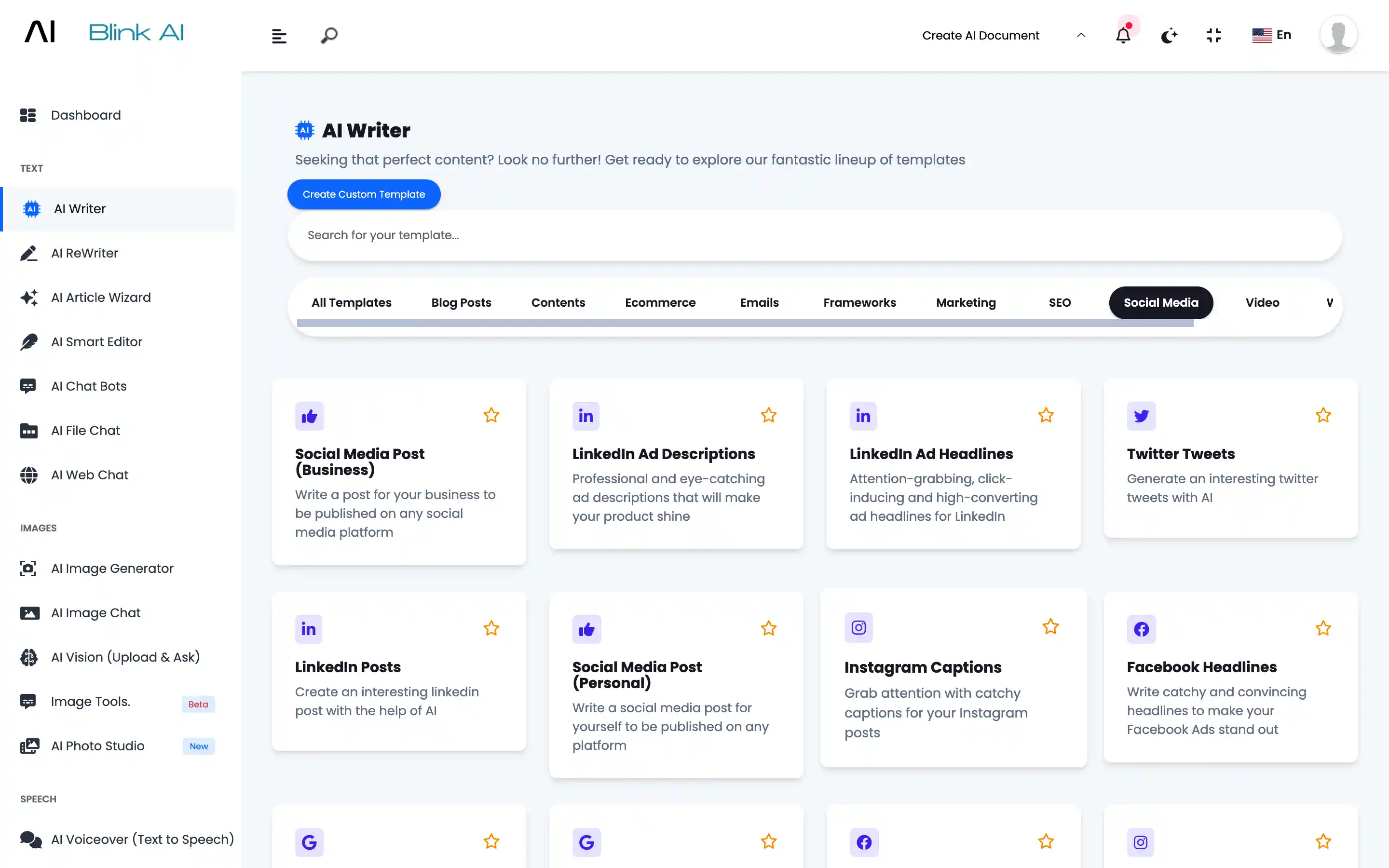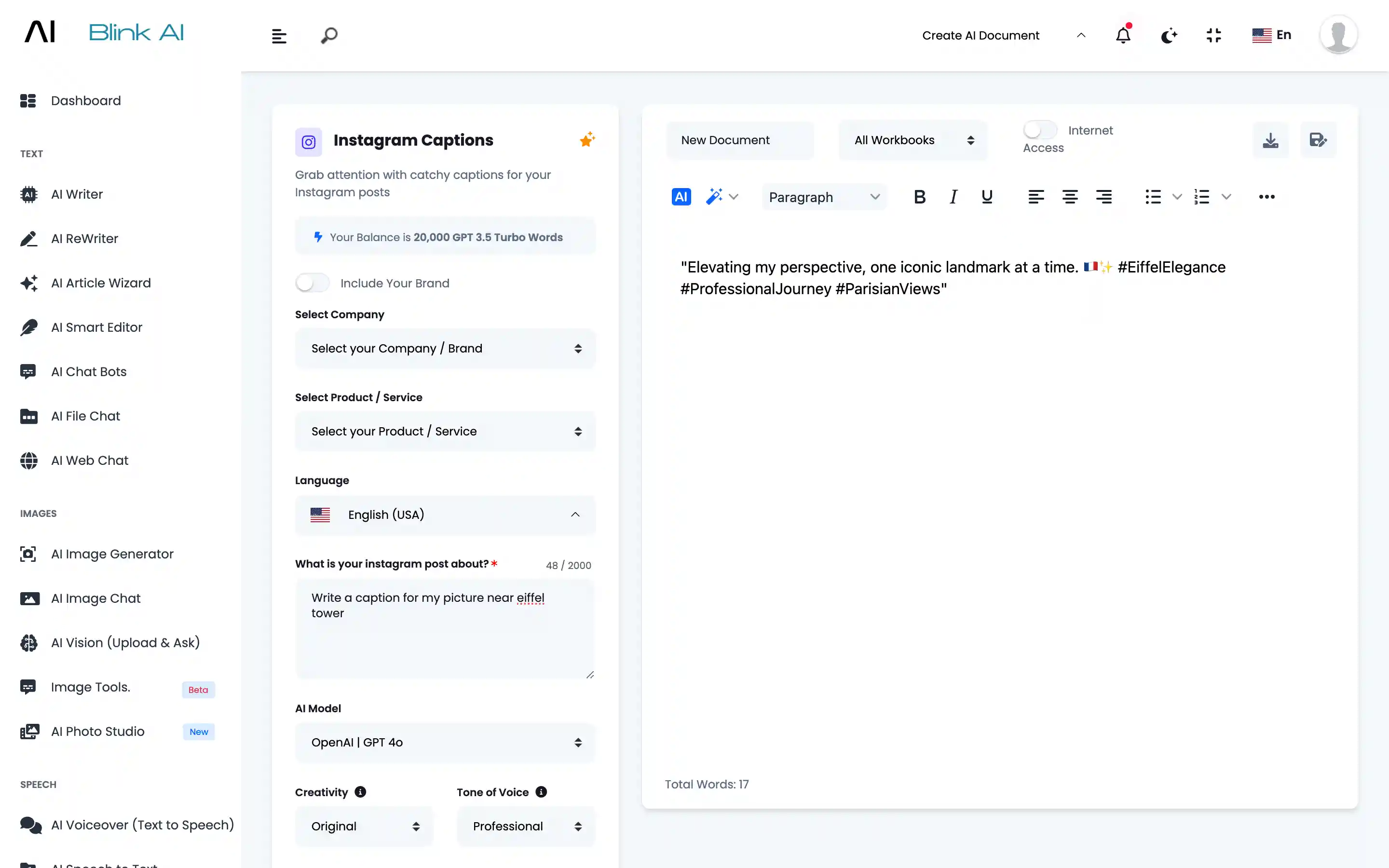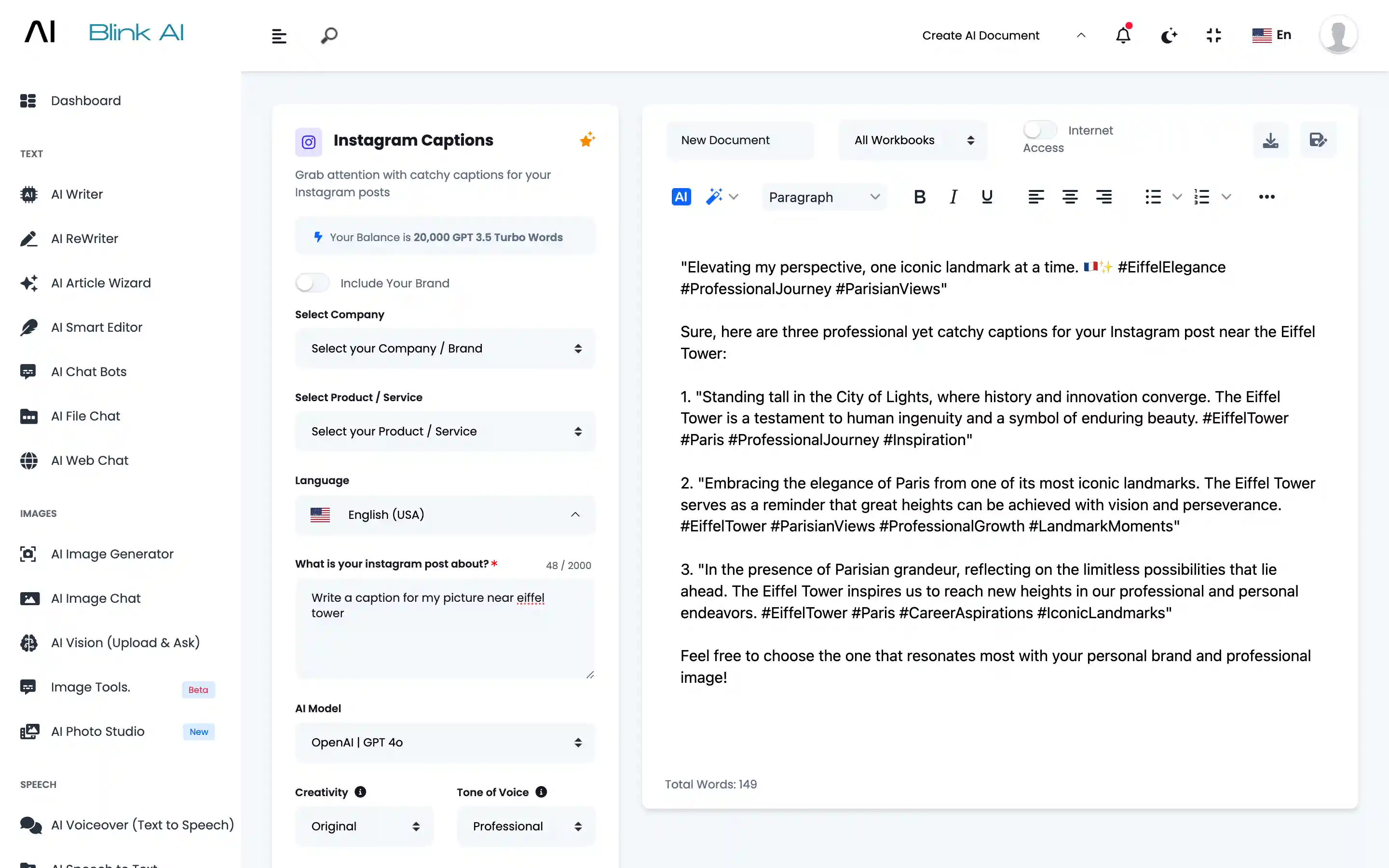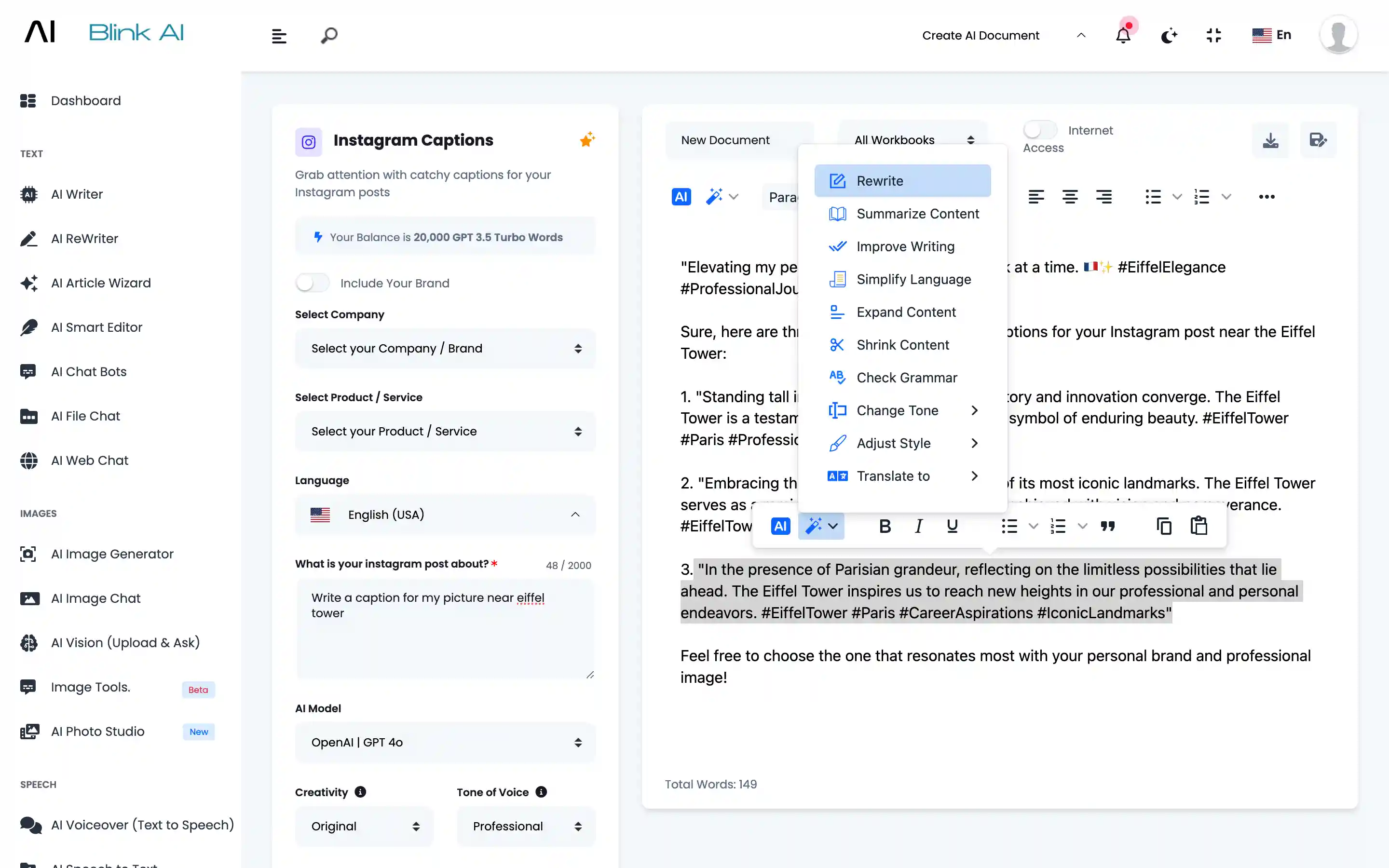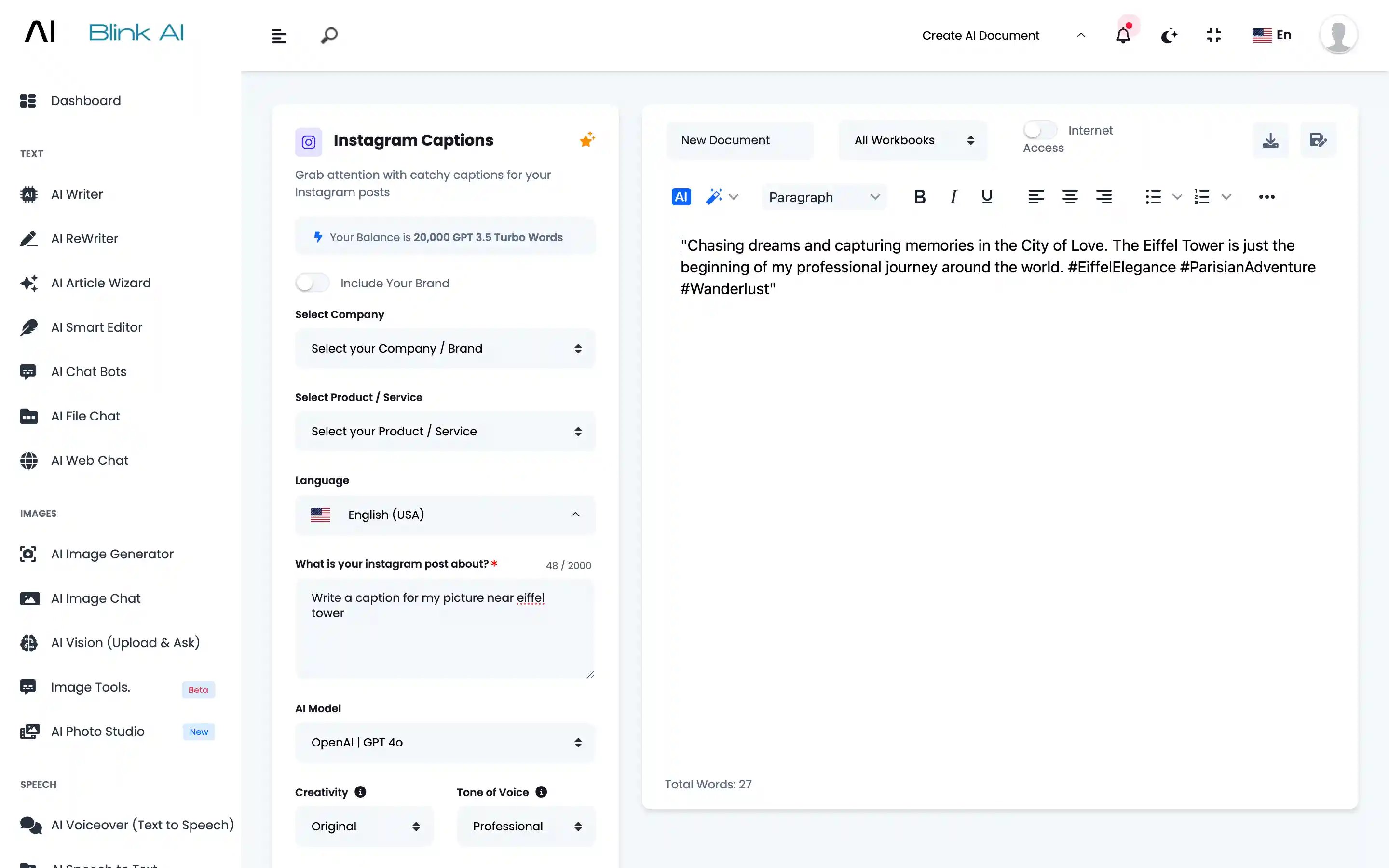Meet, BlinkAI – AI Content Generator: Text, Image, Video, Voice & Code
Pros & Cons
One platform to generate all AI contents





AI Pros & Cons
Write the pros and cons of a product, service or website for your blog article
About Pros & Cons
Creating a balanced and informative blog article about a product, service, or website can greatly help your readers make informed decisions. Here's a comprehensive guide on how to effectively write the pros and cons. 1. Introduction Start with a brief introduction to the product, service, or website. Provide some background information, its purpose, and why it’s worth discussing. Example: "With the digital age rapidly evolving, finding the right tools and services to streamline our daily tasks can be overwhelming. Today, we’re taking a closer look at [Product/Service/Website Name], a popular choice among [target audience]. Let’s delve into its features and see what sets it apart, including its advantages and potential drawbacks." 2. Highlight the Pros a. Quality and Performance b. User Experience c. Cost-Effectiveness d. Innovation and Features Example: "Pros of [Product/Service/Website Name]: 3. Discuss the Cons a. Limitations in Functionality b. User Experience Challenges c. Cost Concerns d. Compatibility and Integration Example: "Cons of [Product/Service/Website Name]: 4. Conclusion Summarize the key points and provide a balanced perspective. Offer your overall opinion and whether you would recommend the product, service, or website to your readers. Example: "In conclusion, [Product/Service/Website Name] offers a range of impressive features and reliable performance that make it a strong contender in its category. While there are some areas for improvement, such as [mention cons], its overall value and unique advantages make it worth considering. If you're looking for [specific need or use case], [Product/Service/Website Name] is certainly worth a try." 5. Call to Action Encourage your readers to share their own experiences, ask questions, or try the product/service for themselves. Example: "Have you tried [Product/Service/Website Name]? Share your thoughts and experiences in the comments below! If you’re interested in exploring it further, visit [link] for more information." By structuring your blog article this way, you provide a comprehensive, balanced review that helps your readers make informed decisions while also engaging them with your content.Writing the Pros and Cons of a Product, Service, or Website for Your Blog Article
Steps for AI Writing
Start Writing Content in 3 Easy Steps
1
Step 1
AI Writer Section
Go to AI Writer section and select a template
2
Step 2
Details
Provide brief details about your requirement
3
Step 3
Generate
Generate, amend and save content
Discover AI Writer
How To Use Blink AI's AI Writer for Content Creation
Go to AI Writer Section
Choose from 70+ AI Writing Templates or Create your Own Template
Describe
You can provide details like what is the exact requirement. How many outputs you want. Which AI model you want to use.
Generate
Content will be generated based on your input.
Amend
Select the content you want to amend. Click on the Magic Wand to amend Generated Content.
Fresh Output
Fresh output will be generated. You can save it in Workbooks.
